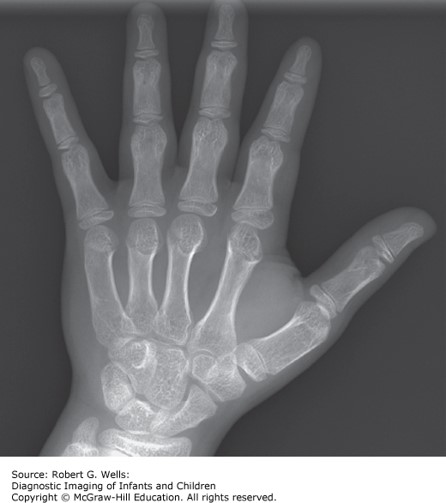Genetics Case

The history shows that the child was born after an uncomplicated pregnancy and delivery. He has been well with no medical complications or hospitalizations. The parents do not remember that anyone was concerned about his size at birth, but they noted shortly thereafter that he was not growing as they expected and they felt that he has short extremities. They also report that recently he has been snoring more at night and has loud breathing during the daytime.
On physical examination, growth parameters show height 60 cm (<5th percentile), head circumference 46 cm (>95th percentile). You note macrocephaly, frontal bossing, flat nasal bridge, hypoplasia of the maxilla, rhizomelic shortening of the extremities, lumbar lordosis, and short hands and feet.

Based on the clinical features the most likely diagnosis is:
A. achondroplasia
B. growth hormone deficiency
C. hypochondroplasia
D. osteogenesis imperfecta (OI)
E. Turner syndrome
The correct answer is A.
Achondroplasia is characterized by abnormal bone growth that results in short stature with disproportionately short arms and legs, a large head, and characteristic facial features. The clinical features include short stature, rhizomelic (proximal) shortening of the arms and legs with redundant skin folds on limbs, limitation of elbow extension, trident configuration of the hands, genu varum (bow legs), thoracolumbar gibbus in infancy, exaggerated lumbar lordosis, which develops when walking begins, large head with frontal bossing, and midface hypoplasia. Turner syndrome is characterized by short stature but not by macrocephaly or the other clinical features noted. Hypochondroplasia is very similar to achondroplasia but is typically less severe and does not have the facial features listed. OI is a disease characterized by bone fractures.
Sources:
Question & Answer: Daum RS, Canel JJ. McGraw-Hill Specialty Board Review: Pediatrics, 2e; 2011.
Photo: Wells RG. Diagnostic Imaging of Infants and Children; 2015.





Create a Free MyAccess Profile
AccessMedicine Network is the place to keep up on new releases for the Access products, get short form didactic content, read up on practice impacting highlights, and watch video featuring authors of your favorite books in medicine. Create a MyAccess profile and follow our contributors to stay informed via email updates.